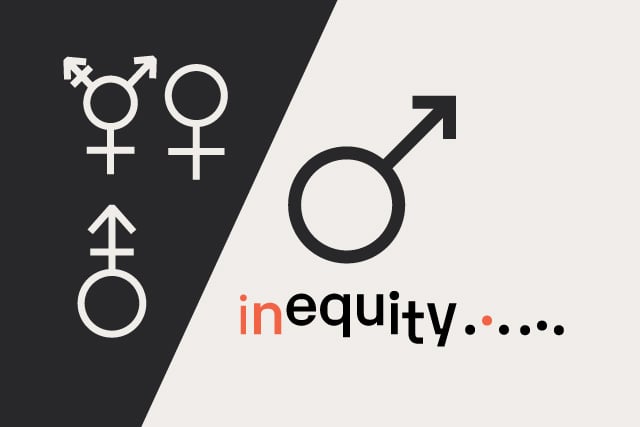7 Reasons Why You Need Discovery
Dennis Kardys Director of Design & Production#Design, #Design Advice, #Discovery

Discovery is a critical step toward paving your project's success. Here are seven reasons why.
If you’re ready to redesign your website, you probably have a good idea of what changes you would like to make, what features you'd like to include, and how you want it to look, so when a web design company suggests a Discovery phase of the project, you might be wondering, "What's the point?". Why pay extra to talk about the site when you could be using your budget to actually build it? However, as familiar as you are with your site, Discovery can give you a greater depth of understanding of its workings and help you find out what website investments will have the biggest impact in satisfying customers and driving business goals. Here are some of the reasons why Discovery is an essential part of the process of redesigning your site:
- Learn how people are using the site - You know what features, content, and tools exist on your site, but you might not know how people actually use them or how effective they actually are. Is your site helping or hindering your users? Through interviews with end users, Discovery can help you determine how and why people access your site and what you can do to make it work better for them.
- Pair technology experts with the users of the technology - Web designers and developers have an intimate understanding of the technology that makes your site work, so Discovery gives them the opportunity to engage directly with the people who actually use the technology. Rather than trying to interpret their issues or requests, which is often unintentionally misleading, the experts can work directly with them to observe their behavior and verbal feedback, learning where they might struggle with the existing interface and uncovering technical opportunities and the potential for innovation.
- Put ideas in front of end users - You've got plenty of ideas for your site redesign, but are they actually going to be helpful for the site's users? Discovery gives you a chance to see what the users think about those ideas and whether they will benefit them and help them use the site. By validating ideas with end users, you can move into the design and development of the site with more confidence about the proposed solutions rather than using up resources on hunches and speculation.
- Gain some outside perspective - Discovery gives you a chance to see if what makes sense to you (and your internal audiences) makes as much sense to external audiences. For example with with navigation, terms and branded initiatives that are familiar to people on the inside are often confusing to people who don’t work within the organization. Similarly, problems are frequently encountered when site structure is modeled off the infrastructure or department tree of an organization, rather than mapping to how the average user would expect content to be organized. Discovery is effective in uncovering better ways to map your site and content to the expectations of your target audiences.
- Get a measurable understanding of your product - Aside from how and why people use the site, Discovery allows you to learn what role your site plays in serving your organization. How does it benefit you, and how can you use it to build even more value for your organization? Beyond the broad needs and goals for your site, Discovery can help you clearly define specific and measurable desired outcomes for the site redesign. In the end, you will have a good understanding of how and why people use the site now, and also a means of tracking how their behavior changes after the redesign is in place. This can help you make sure continued changes to your website are guided by actual data and business intelligence rather than subjective opinion.
- Build consensus - It's important to have support for a web redesign project from within your organization, and Discovery is a great way to build that support. By learning what value the site provides for you, how users use it, and what can be improved, you will have a great deal of useful information to present to stakeholders to get them on board for the project. In addition, giving all vested parties, from internal employees to end users, an opportunity to voice their opinions and needs will help them feel like contributors to the end product and create excitement for all the improvements in store.
- Consolidate needs and prioritize feature requests - Getting stakeholders on board for a site redesign means that you're going to have a lot of ideas for improvements and requests for features pouring in, but it's impossible to accommodate everyone without turning what should be a smooth-running site into a bloated mess. While Discovery helps you find out what changes and improvements need to be made, it also helps you streamline and prioritize those changes, determining which requests are most important and how to meet everyone's needs and wants.
The information and insight gained in Discovery is essential in planning for a web redesign project, helping you make sure that everyone on the same page, and providing a blueprint for moving forward with the site redesign. After a thorough Discovery, you can be confident that you are making smart, informed decisions about the features, functionality, content, and design of your website. If you have questions how a Discovery process might help the project you're planning, get in touch. We'd love to talk more about it!
Related Posts

Establishing Equitable Management Practices
It's International Women's Day and Dennis Kardys shares some things we’ve done at Diagram to be mindful of bias and take steps to embrace diversity.

5 Tips for Quality Assurance ROI
ROI for software quality assurance can be improved exponentially if you follow our five steps. Click to read more.
Results Matter.
We design creative digital solutions that grow your business, strengthen your brand and engage your audience. Our team blends creativity with insights, analytics and technology to deliver beauty, function, accessibility and most of all, ROI. Do you have a project you want to discuss?
Like what you read?
Subscribe to our blog "Diagram Views" for the latest trends in web design, inbound marketing and mobile strategy.
